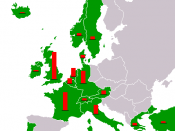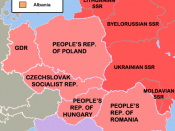The invention of nuclear weapons is the hallmark of a period of enormous significance often called the "atomic age."(2)
The United States began a nuclear weapons program, the Manhattan Project, with Britain and Canada joining in. This effort culminated with the bombing of the Japanese cities of Hiroshima and Nagasaki in early August, 1945. Most Americans remain convinced that the atomic bombs ended the war and saved the lives of troops who otherwise would have been lost in a land invasion.(2)
The atomic age, thus, means a number of things, including creation of awesome weapons of mass destruction, recognition by governments that science is too important to be left to the scientists, establishment of "big science" - large projects staffed by numerous teams of specialists blessed with federal largess, and the emergence of scientists into national politics as advisors, advocates, and critics of government plans. The social responsibility of scientists is no longer the aberration it was a century ago.
(2)
Cold War, term used to describe the post-World War II struggle between the United States and its allies and the Union of Soviet Socialist Republics (USSR) and its allies. During the Cold War period, which lasted from the mid-1940s until the end of the 1980s, international politics were heavily shaped by the intense rivalry between these two great blocs of power and the political ideologies they represented: democracy and capitalism in the case of the United States and its allies, and Communism in the case of the Soviet bloc. The principal allies of the United States during the Cold War included Britain, France, West Germany, Japan, and Canada. On the Soviet side were many of the countries of Eastern Europe--including Bulgaria, Czechoslovakia, Hungary, Poland, East Germany, and Romania--and, during parts of the Cold War, Cuba and China. Countries that...


